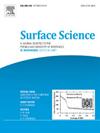Doped bilayer graphene for enhanced sodium-ion battery performance: a first-principles investigation
IF 1.8
4区 化学
Q3 CHEMISTRY, PHYSICAL
引用次数: 0
Abstract
Expanding the interlayer spacing of graphene layers has emerged as an effective strategy to enhance sodiation behavior in sodium-ion batteries. However, the optimal interlayer spacing that facilitates sodiation and maximizes electrochemical storage performance remain incompletely understood. In this study, we utilized first-principles density functional theory calculations to explore possible doping strategies aimed at modulating the interlayer spacing of bilayer graphene (BLG) to optimize its sodiation behavior. We investigated single-atom- and co-doping of BLG with various non-metal, transition metal, and metal elements. Most dopants resulted in significantly increased interlayer spacings of BLG, potentially enhancing sodiation capacity. Notably, among the systems considered, Zn–Ge co-doped BLG exhibited the highest theoretical capacity of 828 mAhg–1, surpassing the value of pristine BLG (124 mAhg–1). Moreover, Zn–Ge doped BLG showed a relatively low energy barrier (0.25 eV) against Na diffusion, which is desirable for facilitating rapid charge and discharge processes. These findings have implications for the design of high-performance graphene-based anode materials for sodium-ion batteries.

掺杂双层石墨烯增强钠离子电池性能:第一性原理研究
扩大石墨烯层间距已成为提高钠离子电池钠化性能的有效策略。然而,促进钠化和最大化电化学存储性能的最佳层间距仍然不完全清楚。在这项研究中,我们利用第一性原理密度泛函理论计算来探索可能的掺杂策略,旨在调节双层石墨烯(BLG)的层间间距,以优化其调解行为。我们研究了BLG与各种非金属、过渡金属和金属元素的单原子和共掺杂。大多数掺杂剂导致BLG层间间距显著增加,潜在地增强了调解能力。值得注意的是,在考虑的体系中,Zn-Ge共掺杂BLG的理论容量最高,为828 mAhg-1,超过了原始BLG的124 mAhg-1。此外,掺杂Zn-Ge的BLG对Na扩散具有相对较低的能垒(0.25 eV),有利于快速充放电过程。这些发现对高性能石墨烯基钠离子电池负极材料的设计具有指导意义。
本文章由计算机程序翻译,如有差异,请以英文原文为准。
求助全文
约1分钟内获得全文
求助全文
来源期刊

Surface Science
化学-物理:凝聚态物理
CiteScore
3.30
自引率
5.30%
发文量
137
审稿时长
25 days
期刊介绍:
Surface Science is devoted to elucidating the fundamental aspects of chemistry and physics occurring at a wide range of surfaces and interfaces and to disseminating this knowledge fast. The journal welcomes a broad spectrum of topics, including but not limited to:
• model systems (e.g. in Ultra High Vacuum) under well-controlled reactive conditions
• nanoscale science and engineering, including manipulation of matter at the atomic/molecular scale and assembly phenomena
• reactivity of surfaces as related to various applied areas including heterogeneous catalysis, chemistry at electrified interfaces, and semiconductors functionalization
• phenomena at interfaces relevant to energy storage and conversion, and fuels production and utilization
• surface reactivity for environmental protection and pollution remediation
• interactions at surfaces of soft matter, including polymers and biomaterials.
Both experimental and theoretical work, including modeling, is within the scope of the journal. Work published in Surface Science reaches a wide readership, from chemistry and physics to biology and materials science and engineering, providing an excellent forum for cross-fertilization of ideas and broad dissemination of scientific discoveries.
 求助内容:
求助内容: 应助结果提醒方式:
应助结果提醒方式:


